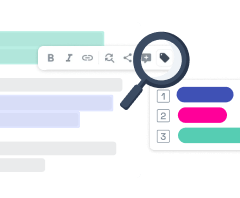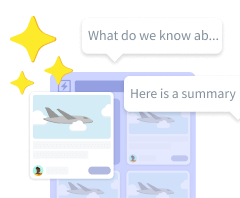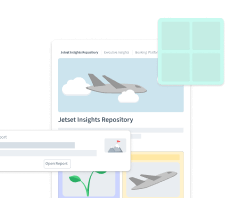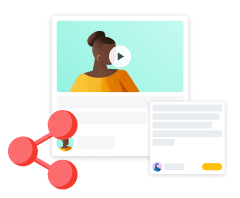Data anonymization and redaction
Anonymization tools in Condens help you protect participant identities and adhere to strict privacy policies and compliance standards, without losing the context that makes research meaningful.

For every media file, you can:
Blur faces (Beta) to help protect identities, while keeping the visual context that makes clips compelling.
Blur the entire video to remove any instance when even background visuals or screen shares could reveal sensitive information.
Anonymize voices, so you can safely share insights that keep the value of their tone and expression.
Manually redact text, audio, or video to hide sensitive information from specific time frames in a recording.
All anonymization features are included in the Enterprise plan, with video blurring available in the Business plan.
How to anonymize media
You can apply anonimization in a few ways:
#1 Anonymize media while uploading
When you upload a media file to a Session and click the Transcribe button, you'll find the options to anonymize data. Any options you select here will apply to the entire video.
#2 Anonymize existing media
For existing recordings in a Session, click the and then . Just like the previous option, any anonymization options you select here will be applied to the entire video.
#3 Manually redact specific parts of text, audio, or video
If you want to redact only specific parts of your Session, you can either highlight them in the transcript or select the timeframe on the video timeline, below the video player, and click the Redact icon. From there, you can choose to redact:
Text & transcript to permanently hide the selected text from notes and transcipt.
Audio to permanently mute the audio of that section.
Video to blur the selected part of the video and hide any sensitive information.
Please note that once you manually redact data, your choices will automatically apply to existing and future Highlights that contain the selected time frames.

Once you've selected your preferred options, you can quickly reapply them to selected parts of the transcript or recording by holding down ⌘ while clicking the redact button or using ⌘ + ⇧ + R on your keyboard.
Tips for improving face anonymization quality
Effective face anonymization in video recordings relies on good video quality and optimal participant presentation. While many principles apply universally, there are specific settings and tricks unique to each platform.
Optimal camera position & lighting
Optimal camera position and lighting play a big role in how well face detection works, which directly impacts anonymization quality.
Encourage participants to face the camera directly. Faces at extreme angles are harder to detect.
Ensure ample, even lighting on the face. Natural light from a window in front of them is ideal. Avoid strong backlighting that silhouettes the person, and minimize harsh shadows on the face, as these can obscure features and reduce detection accuracy.
Position the camera so the face is centrally framed and fills a good portion of their individual video feed.
Avoid placing hands, objects, or hair in front of the face to minimize obstructions.
A plain, uncluttered physical background is often better for consistent face detection. If using virtual backgrounds or background blur features, ensure they don't cause blurring or artifacts around the person's edges, as this can negatively impact face detection.
Excessive movement can make face tracking difficult. Encourage participants to remain relatively still.
Avoid "Touch Up My Appearance" in Zoom or "Portrait Touch-up" in Google Meet when possible, as they can subtly (or intensely) blur facial features, potentially impacting detection accuracy.
Maximizing video quality & face size in recordings
Different platforms offer varying degrees of control over video quality and how participant videos are displayed, which in turn affects the size and clarity of faces in the recording.
We suggest that you enable HD video, as higher resolution generally provides more detail for face detection.
In Zoom, you can enable HD in Settings.
In Google Meet settings, ensure your "Send resolution (maximum)" is set to High Definition (720p) or Full High Definition (1080p) if available and supported by your hardware and network.
Ensure the video file itself is of good quality (minimal compression artifacts, blur, etc.). The better the initial video input, the better the final anonymization. If your recording is lower than 720p due to network conditions, consider if you can re-record with better connectivity or a better camera.
Optimizing for Zoom Recordings
Zoom offers more granular control over local recording layouts and how videos are positioned relative to shared screens.
If you are the primary subject and want your face to be prominent, try to be in Speaker View for most of the recording to maximize your video window.
If you are the presenter, consider using a Presenter Layout that emphasizes your video during screen sharing, such as “In front” or “Side-by-side.” Resize your video to be as large as possible without obscuring critical shared content.
If you are recording a meeting where others are sharing their screen, but you need to prioritize face detection, instruct the person recording to switch to the “Side-by-Side Mode” view (either Speaker or Gallery). They can drag the vertical separator bar to significantly increase the size of the video panel (faces) and decrease the size of the shared screen. This directly makes faces larger in the recorded output.
Local recordings can often offer higher quality than cloud recordings in Zoom.
Enable the “Record video during screen share” in Settings > Recording in your Zoom Desktop app.
Ensure that “Place video next to the shared screen in the recording” is checked (if you want the “Side-by-side” view). The viewer’s adjustment of the side-by-side separator during the meeting will directly influence the recorded output if they are the one recording locally.
Consider setting the recording layout to “Record video thumbnail next to shared screen” or “Record gallery view with shared screen” and then manually adjust the video panel size to be larger for the recording during the meeting.
While the host can influence the default recording layout, it’s often the individual recorder’s settings and live adjustments that have the most impact on video quality and face size for their local recording.
For Cloud Recordings, Zoom typically offers standard layouts (Speaker View, Gallery View, Screen Share with Speaker, etc.). Ensure the chosen layout maximizes face visibility. If screen sharing is happening, a layout that shows the speaker’s video prominently (e.g., “Active Speaker with Shared Screen”) is usually better than one that minimizes it.
Optimizing for Google Meet Recordings
Google Meet's native recording primarily focuses on cloud recording, with less direct control over layout customization for the recorded output compared to Zoom.
While Google Meet offers layouts like "Auto," "Tiled," "Spotlight," and "Sidebar" for the live meeting view, the impact on the recorded output can be less predictable than Zoom's explicit recording layout options.
"Spotlight" mode in a live meeting (which shows the active speaker or pinned participant full-screen) might lead to larger faces in the recording, especially if that person is speaking for extended periods.
When screen sharing, Google Meet's standard recording often prioritizes the shared screen. While you can use the "Sidebar" layout in your live view to see participants alongside the shared content, there isn't a direct "resizable separator" like in Zoom to control the recorded output's balance between shared screen and video panels.
Google Meet recordings are typically saved to Google Drive (cloud recording). For Google Workspace administrators, there's an option to "Set recording quality limits for Google Meet" to record at the highest available resolution (up to 1080p) when conditions allow. Individual users primarily control their "Send resolution" for their outgoing video feed.
For greater control over recorded layout and quality in Google Meet, consider using third-party screen recording software on your computer, which records exactly what is displayed on your screen, including your chosen Google Meet layout.




